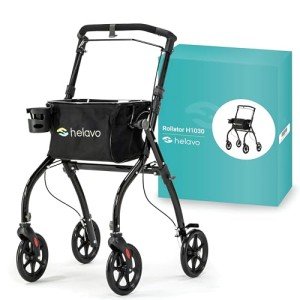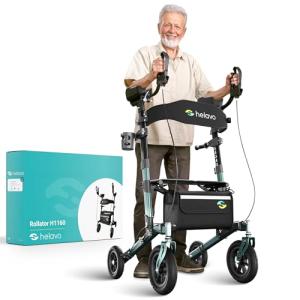5 Killer Quora Answers On Handicapped Walker
본문

The Essential Guide to Handicapped Walkers: Enhancing Mobility for Individuals with Disabilities
Walking aids play an important role in boosting the quality of life for people with handicaps. Amongst these, handicapped walkers, likewise referred to as walkers or rollators, are indispensable tools that help users in preserving mobility, self-reliance, and security. This post aims to supply an in-depth introduction of handicapped walkers, discussing their types, benefits, and crucial factors to consider for users when picking a walker that best suits their needs.

Table of Contents
- What Is a Handicapped Walker?
- Types of Handicapped Walkers
- Standard Walkers
- Two-Wheeled Walkers
- Four-Wheeled Walkers
- Features to Consider When Selecting a Walker
- Benefits of Using Handicapped Walkers
- FAQs
- Conclusion
What Is a Handicapped Walker?
A handicapped Foldable Rollator Walker is a mobility aid developed to assist individuals who have problem walking or preserving balance due to disabilities, injuries, or aging. It provides support, stability, and security, assisting users browse their environment with greater self-confidence and independence. Handicapped walkers are available in numerous styles to fit various mobility obstacles, making them flexible tools for many individuals.
Kinds Of Handicapped Walkers
Understanding the various types of walkers is vital for selecting the ideal one. Below is a summary of the primary types of handicapped walkers:
| Type | Description | Ideal For |
|---|---|---|
| Requirement Walkers | Basic frame without any wheels, requiring the user to raise it to move. | Individuals with stable balance. |
| Two-Wheeled Walkers | A Lightweight Walker Innovative Walker Design equipped with 2 front wheels for much easier movement. | Users needing more mobility support. |
| Four-Wheeled Walkers | An advanced design with four wheels, handlebars, and frequently a seat. | Those requiring maximum support and rest alternatives. |
1. Standard Walkers
Requirement walkers, one of the most standard variation, are built as a strong frame. Users lift the walker and place it forward, enabling stable motion. This kind of walker is perfect for individuals with limited mobility however who keep excellent balance.
2. Two-Wheeled Walkers
These walkers integrate 2 front wheels, significantly improving maneuverability compared to standard walkers. Users can push the walker rather of lifting it, making it much easier to browse.
3. Four-Wheeled Walkers
Also called rollators, four-wheeled walkers featured wheels on all four legs, making them Easy Maneuver Rollator Walker to press. Lots of models also include a comfortable seat and back-rest, allowing users to take breaks throughout longer walks or outings.
Features to Consider When Selecting a Walker
Before buying a handicapped walker, it's important to evaluate particular features that may boost the user experience and safety. Here are some important considerations:
| Feature | Description |
|---|---|
| Weight Capacity | Ensure the walker supports the user's weight. |
| Height Adjustability | Look for adjustable handlebars for a proper fit. |
| Wheels Quality | Analyze if the wheels are robust for different surfaces. |
| Brake System | Identify if it has a reliable braking mechanism for safety. |
| Storage Options | Consider if it has a basket or bag for personal items. |
Advantages of Using Handicapped Walkers
The benefits of utilizing handicapped walkers extend beyond mobility, supplying psychological and physical advantages:
- Increased Independence: Walkers allow users to walk around without relying excessively on caretakers or member of the family.
- Improved Safety: With improved stability, walkers significantly lower the risk of falls, contributing to a more secure living environment.
- Improved Confidence: Users typically report feeling more Secure 4-Wheel Walker and positive when using a walker, encouraging them to engage more in social activities.
- Health Benefits: Regular usage of a walker can promote physical activity, leading to much better cardiovascular health, improved muscle tone, and general wellness.
FAQs
1. How do I understand which kind of walker is best for me?
Picking the very best walker depends upon your physical abilities and mobility needs. Consulting with a healthcare expert or occupational therapist can offer customized recommendations based upon your specific health circumstance.
2. How should I maintain my walker?
Routinely check your walker for wear and tear, mainly focusing on the wheels and brakes. Clean down surfaces with a damp fabric to keep it clean and store it in a dry location when not in use.
3. Can I utilize a walker on uneven surfaces?
While some walkers are much better matched for unequal surfaces than others, care is advised. It may be useful to pick a walker with larger wheels for much better stability on such terrains.
4. Are there walkers designed specifically for outdoor use?
Yes, numerous four-wheeled walkers are specifically developed for outdoor usage, featuring bigger wheels and more robust building and construction to manage different surfaces.
5. Do walkers can be found in various colors or designs?
Yes, different designs, colors, and designs are available to cater to individual preferences while still meeting functional requirements.
Handicapped walkers are transformative aids that can considerably enhance the lifestyle for people facing mobility obstacles. By understanding the types of walkers, their features, and the advantages they offer, users can make informed options that line up with their personal mobility needs. As technology and design develop, the future of handicapped walkers assures even higher assistance and convenience, encouraging independence and an active lifestyle for all.


댓글목록 0